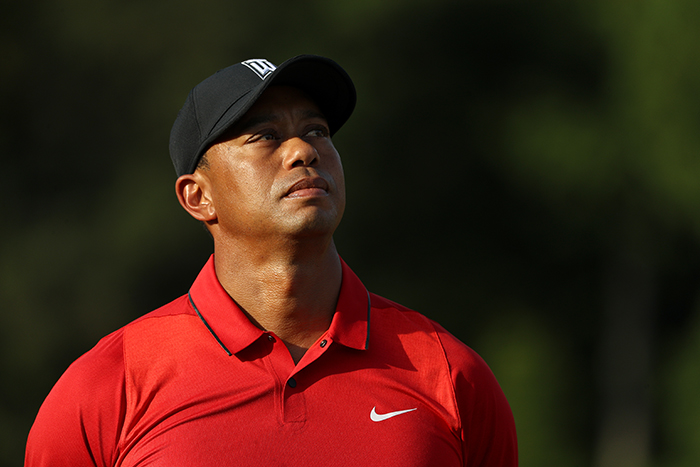How we’ve missed Tiger Woods. Sport’s first dollar billionaire – he achieved that status in 2009, aged 33 – has announced that he’s intending to make a comeback to competition golf in October at the Safeway Open in California. And the golfing fraternity went wild.
You only realise what you have lost when it’s not there and for the entire 2016 Woods has been the invisible man. This time it was recurring crippling back injury which has kept him off the course and out of the public eye, unlike the private storm which raged around his head in November 2009 that saw him disappear without trace.
It’s safe to say that the 14-time Major champion has never been the same since his private life unravelled in the unforgiving eye of the world’s media. He won the last of those 14 Majors in 2008 at the US Open. The man who was ranked No1 in the world for a total of 683 weeks – that’s basically a total of 13 years – is now languishing at No711 in the world rankings. He has played 20 tournaments from the beginning of 2014 and missed the cut in six of those.
Consider that he only missed the cut six times from 1997 to 2010 in 273 tournaments and you can see how steep the Woods descent has been.
He’s now 40, turning 41 in December, and the four Major victories needed to tie Jack Nicklaus’ record of 18 looks light years away. In fact, right now it’s tough seeing Woods teeing up in four more Majors, given the extent of his injuries.
Last year I was part of a media group invited to The Open Championship at St Andrews and Woods came into the Rolex corporate suite at a difficult time. He missed the cut at St Andrews after rounds of 76 and 75 had left him on 151 and seven shots away from making the weekend, but he was a consummate professional in how he fulfilled his obligations. At one stage he even joked with a colleague about ‘coming here in your pyjamas’ as he observed the rather colourful trousers the journalist was wearing – admittedly we were hurried to the appointment straight after playing on the nearby Castle Course.
A few weeks later a parcel arrived in the post. It was the flag from the 18th hole at the 144th Open Championship and on it were the words, ‘To Gary, Best wishes, Tiger.’ It was a gesture that knocked me sideways and came completely unexpected.
To say that I am a Tiger Woods fan is a bit of an understatement. He is one of sport’s marquee acts of the 21st century – he started his run of Major titles in 1997 – and he virtually singlehandedly drove golf’s numbers through the ceiling. The sponsors, TV, public and golf in general loved him.
Yes, there are other versions of what he is really like and they are not complimentary.
The celebrated writer John Feinstein – author of A Good Walk Spoiled – wrote a couple of years ago: ‘In most golf interview rooms if Tiger said the Earth was flat, people would write it down. Most golfers will usually answer a few extra questions either one-on-one or to a small group after a press conference or as they walk to and from the practice ground. Not Tiger. He’s so security-obsessed that a PGA Tour official had to walk into the locker room at one of his first tournaments to inform him that his security guards could not order the media to leave just because Tiger didn’t feel like talking.
‘Those who have been part of the very closed Tiger circle learn quickly that to talk at all to anyone outside the circle can quickly lead to expulsion,’ Feinstein wrote.
Yet Tiger is back, well hopefully, and that’s great for golf and exciting for sport.
Without hitting one shot in tournament play in the entire 2016 so far he has amassed $45.5-million in revenue. That puts him at No51 on Forbes’ list of top earners for the year with Taylor Swift ($171m) at No1. When Woods returns, expect him to leapfrog over dozens of those above him on that list, as well in the world rankings.








